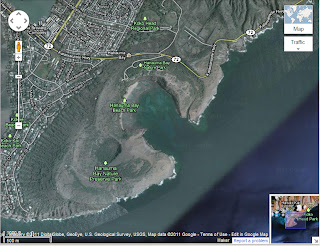2. What did the ecosystem historically look like? Hanauma Bay was created by a volcanic eruption that led to the formation of a beach and an environment suitable to support the coral reef.
3. How have people impacted the ecosystem? (Good, Bad, Ugly?) Initially, humans had a negative impact on Hanauma Bay. People abused the ecosystem by littering, polluting, and trampling on the fragile coral reef. In the 1990s, people began to implement measures to protect the area. The human impact has since been positive.
4. What benefits do people get from the ecosystem? People use the ecosystem for recreation, including activities like swimming, snorkeling, diving, and picnicking. In addition, Hanauma Bay offers "fisheries, tourism, amenities, and biodiversity." (van Beukering, Cesar)
5. Are there any protected areas for that ecosystem? Yes, people are now required to attend an information session before entering Hanauma Bay. Restrictions have been put in place to limit attendance. For example, the park is closed on Tuesdays to allow the bay to replenish, nonresidents of Hawaii are charged admission fees, and no more than 3,000 people can visit the park daily.
6. What is the status of that protected area? Although the coral reef has been threatened by tourist overuse, measures have been taken to lessen the human impact. Specifically, an educational program has been implemented to raise awareness about how people can enjoy the recreational activities that the ecosystem in a cautious way by, for example, not walking on the coral reef and not feeding human food to the fish (which often caused marine debris).
7. What is likely to happen in the future to that ecosystem? Because the area is protected, the conservation status of Hanauma Bay looks good, but the University of Hawai'i study shows that conservation efforts can be heightened by increasing admission fees to Hanauama Bay. Increased admission fees may deter tourist overuse and can be allocated toimproving educational programs, which have had a positive impact on Hanauma Bay.
8. What can be done to maintain balance between people and the ecosystem? The current measures have definitely helped to reduce the negative human impact on the ecosystem. Further measures are also being researched in an effort to integrate the ecological and economic processes at work at Hanauma Bay and find better ways to protect the ecosystem
Map:
(Courtesy of Google Maps)
Historic:
(Courtesy of http://www.hanauma-bay-hawaii.com/)
Present:
(Courtesy of Jessica Nazar, 08/07/2011)


